During the Toarcian age of the Lower Jurassic, early sauropods like Tazoudasaurus and early thyreophorans like Emausaurus were walking around on land. In the ocean, hildoceratid and dactylioceratid ammonites, plesiosaurs, and marine crocodiles were swimming around. It was also the heyday of ichthyosaurs, one of which was the large, long-snouted Eurhinosaurus longirostris (loosely, “long-beaked lizard well-equipped in the nose department”). Last year, PNSO released this figure as part of their mid-range Prehistoric Animal Models line.
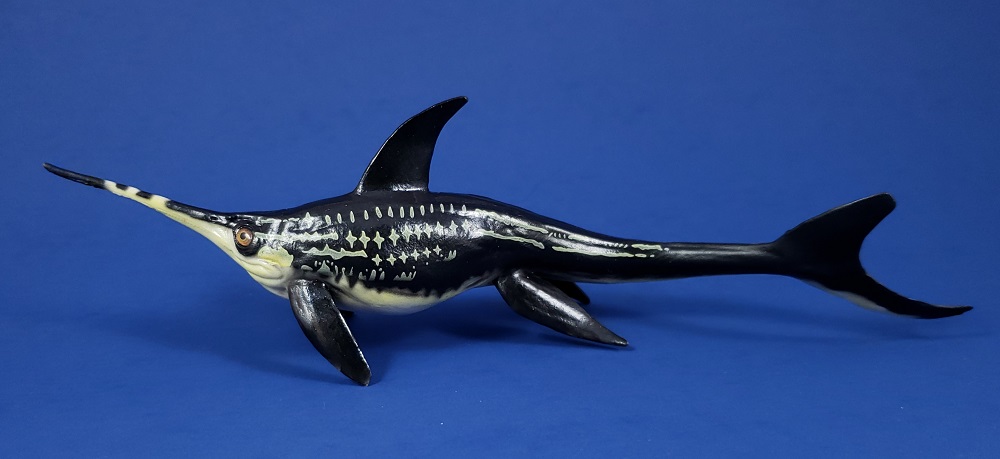
Eurhinosaurus was a leptonectid, related to the similarly exaggerated Excalibosaurus. Both genera are notable for their extra long maxilla and premaxilla (upper jaw) and large orbits (eye sockets). The upper jaw was more than twice as long as the lower, and had teeth angled downward along most of its length. This isn’t quite like anything alive today, but it might remind you of a swordfish (whose ‘sword’ does not have teeth) or a sawfish (whose rostrum has teeth that point sideways). It may have used this toothed snout to probe in mud for prey, or it may have used it as similarly equipped fishes do, slashing and stunning prey.
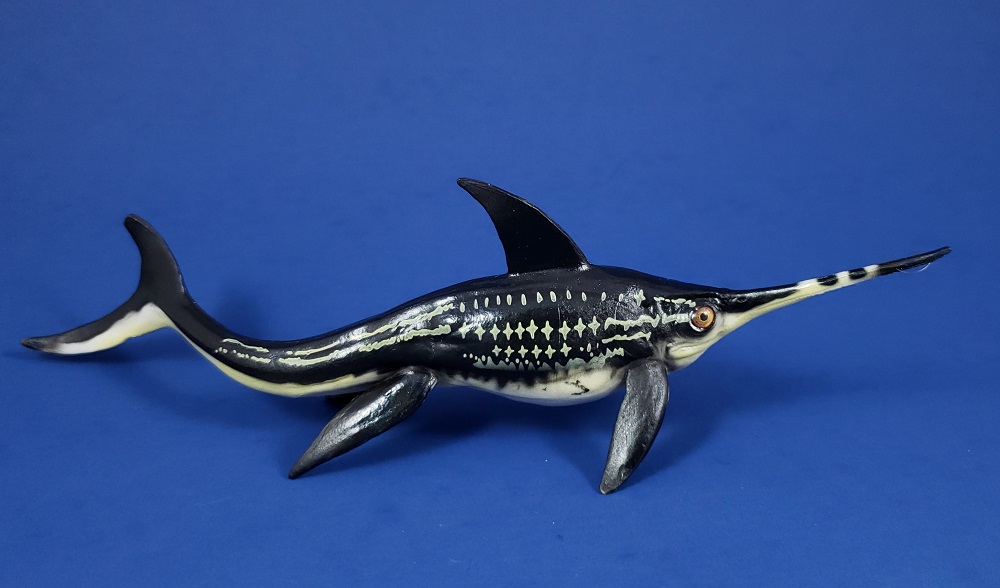
Arguably, this lovely rendition is the first Eurhinosaurus toy, although the unspecified ichthyosaur released by Starlux in 1972 did have a pretty elongate snout (and somehow, we’ve never reviewed it here!). The figure is molded in a single piece from solid PVC, and its extremities are pliable enough that the bill will probably be prone to warping if stored incautiously. It’s a very pale gray on the belly, with a very dark violet, almost black, on the upper surface. The sides are decorated with broken horizontal streaks of pale blue-gray and white, forming rows of irregular diamond-shaped markings. The eyes are an uneven brown-ocher, with very tidy black pupils. The eyes are so neat that I suspect they are stickers or machine-printed rather than hand-painted. The main body colors continue onto the snout, where the minute teeth just take on the color of whatever skin is nearby instead of being painted a different color.
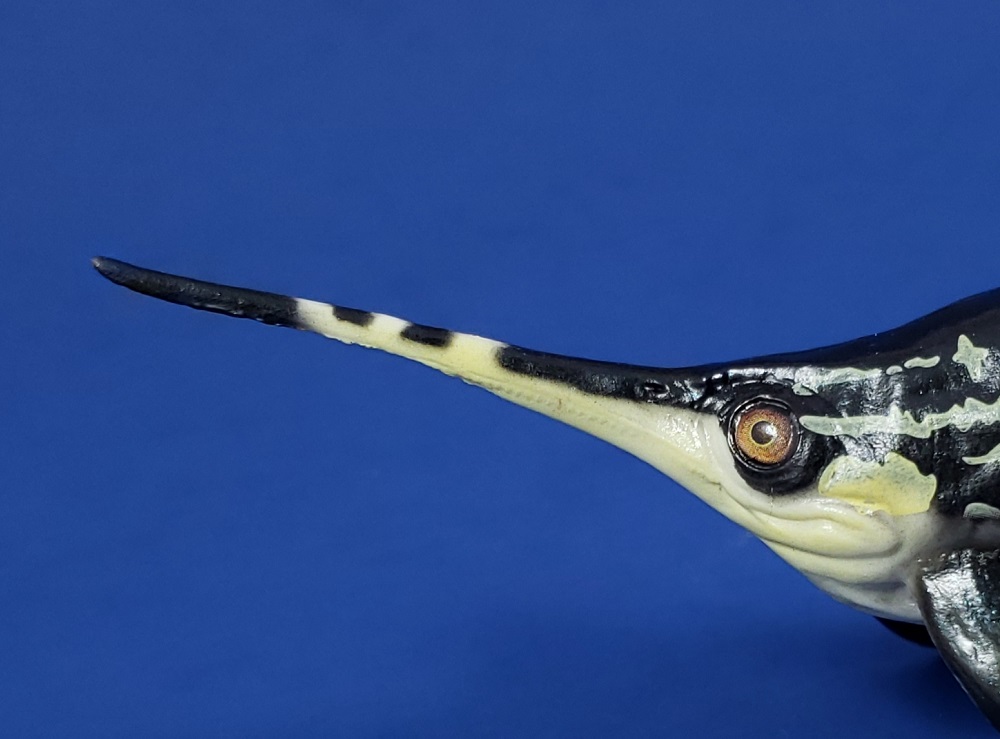
This ichthyosaur is sculpted in an undulating swimming posture with its snout angled upward, maybe circling a shoal of Saurorhynchus or Ptycholepis. It looks really nice, but a little bit too sinuous, a result of incorrect proportions. The torso should be about 75% of the length of the tail, including the lower lobe, but in this figure the torso is only about half as long as the tail. This sculpt, if brought to life, would be disadvantaged in the same way a boat would be if its propeller trailed behind the hull by a short length of rope. The figure is a shade over 20 cm in length, measured from the tip of the snout along the spinal column. For a 6 meter individual, that makes it about 1:30 scale by total length. However, you would get different values from individual elements.

The dorsal fin is strongly developed, a pretty reasonable reconstruction. The tail has a strong lower lobe, which is shown by fossils with the vertebral column abruptly deflected downward. The upper lobe is smaller, which isn’t impossible, although if I’m not mistaken, ichthyosaurs in this part of the family tree usually had more symmetric tails. The hind flippers are a bit longer than the front flippers, despite fossils showing pretty clearly that Eurhinosaurus had longer front flippers. The body and base of the tail are almost certainly too narrow.
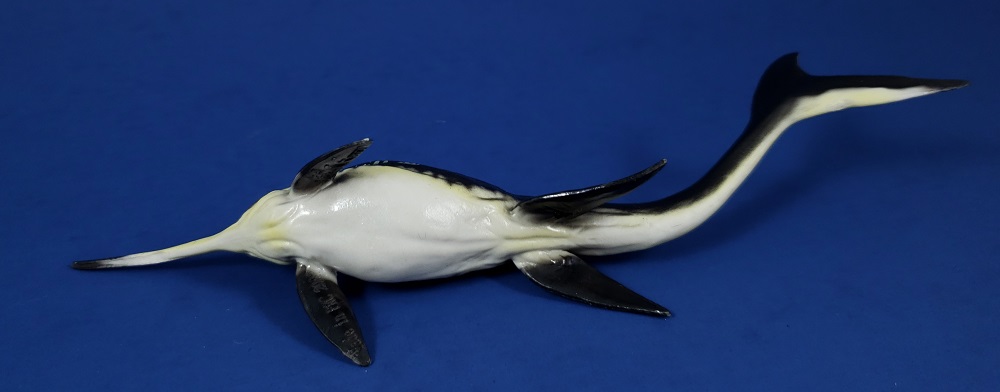
The texture is smooth, with minor wrinkles along the ventral midline, around the flippers, and near the mouth. This is much more reasonable than in PNSO’s severely over-textured Ophthalmosaurus. The underside even shows an indentation where the cloaca would be.
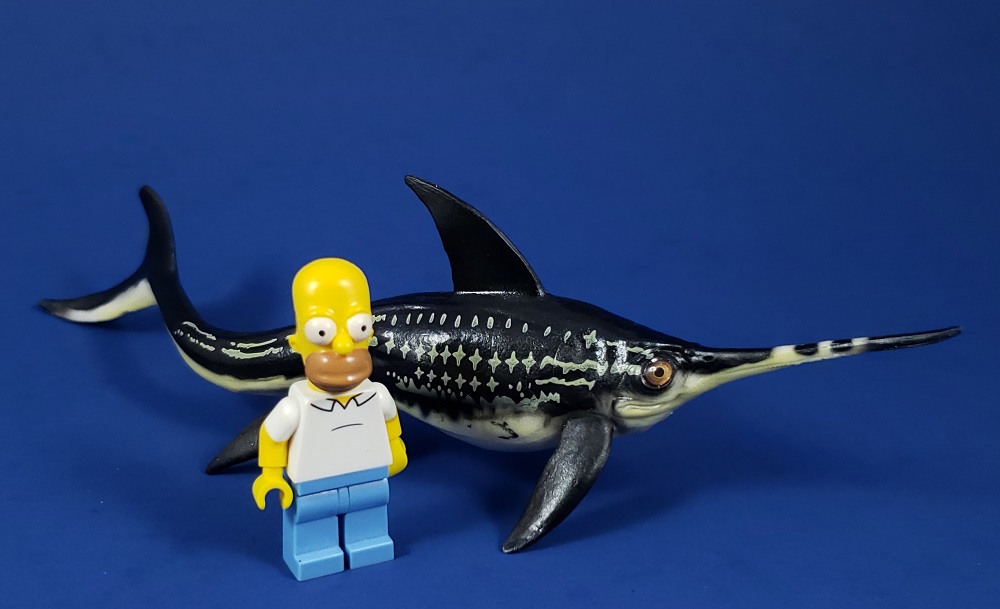
This model is very pretty, but it has errors that could have been corrected with cursory research. It stands as the best exemplar of its genus, but of course as of this writing there isn’t any competition for that title. I hope that future marine reptile figures from PNSO are a little bit more careful with anatomical proportions. In the meantime, I’d recommend this figure to anyone who likes marine reptiles or unusual species. It’s suitable for all but the youngest children, as the bill is flexible enough not to be a danger to anyone’s eyes if it goes airborne. You can get it at a variety of online retailers, generally for less than $20.
Disclaimer: links to Ebay and Amazon on the DinoToyBlog are affiliate links, so we make a small commission if you use them. Thanks for supporting us!





I love this figure, definitely one of the more interesting marine reptiles in toy form.
It displays nicely with CollectA’s Excalibosaurus, great review.
Inaccuracies aside, I think this is the most beautiful ichthyosaur toy to date.
It’s a shame this model was painted so beautifully but with seemingly little care by the painter.